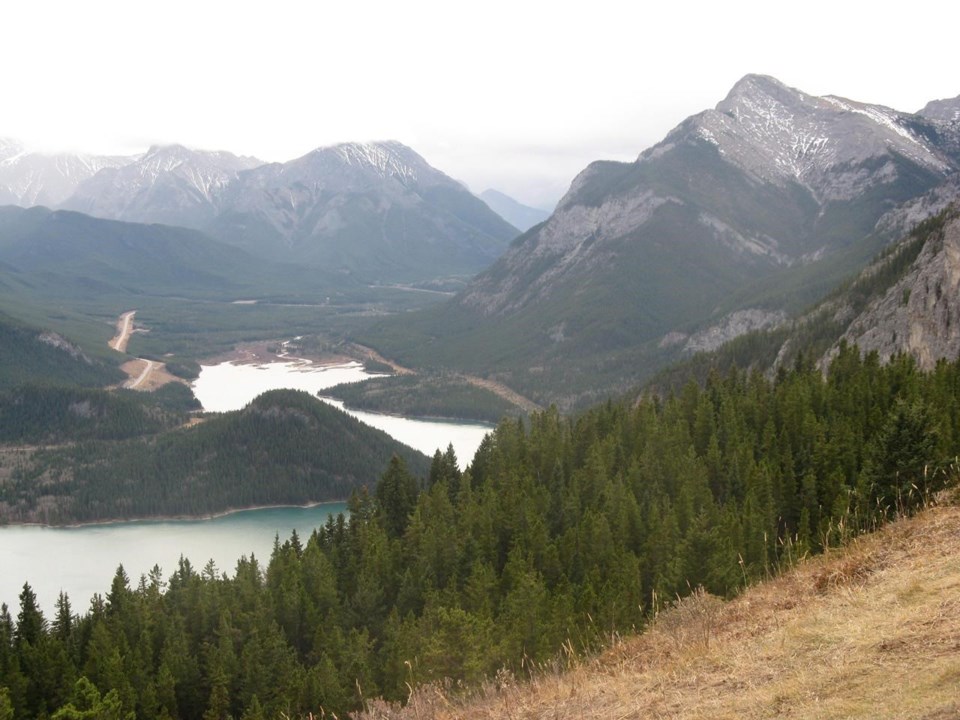EDMONTON — In the middle of an Alberta mountain playground, adjacent to a popular ski resort, there's a well sunk into the bedrock that has John Pomeroy worried.
The Marmot Creek well in Kananaskis Country has been there for generations, says the University of Saskatchewan water scientist. It's one of the few groundwater monitoring wells that Alberta has in the mountains. Away from any human influence, it's a good indicator of what's actually happening.
"The lowest water levels are all in the last seven years and the levels are much lower now than they were in the '70s and '80s," Pomeroy said.
"It'll be a climate signal that we're seeing."
As predicted by climate change models, drought is desiccating the Prairies, especially southern Alberta. The province has already warned municipalities to plan for another dry summer, is preparing help for farmers and aims to mobilize firefighting teams early.
But those measures address surface water. About 600,000 Albertans depend on groundwater, and scientists and rural officials say not enough is known about the effects years of drought have had on the unseen flows beneath our feet.
"We have to make sure we're managing groundwater and surface water as a common resource," said Pomeroy. "If we deplete one, we're depleting the other."
So far, the signals are mixed. Alberta maintains a network of more than 200 monitoring wells across the province and many show water levels that are stable or even increasing.
But many are not.
Masaki Hayashi, a University of Calgary hydrologist, pointed to wells in Rocky View County outside Calgary, home to 40,000 people.
"It's been another year of drought," he said. "Now these wells are hitting all-time lows."
Long-term trends are ambiguous, he said. Precipitation cycles between wet years and dry.
But trends are leaning toward the latter. Four dry years, 2015-18, were followed by a couple of wet ones. Precipitation data at the Calgary airport shows the last three have been dry again.
Creeks, rivers and lakes are all connected and what seeps up must first soak down.
"Unless you have this recharge from time to time, (levels) are going to keep going down," Hayashi said.
Paul McLauchlin, president of Rural Municipalities of Alberta and an environmental scientist, said his members are increasingly concerned about the impact dry year after dry year is having on their water.
"It's a critically important resource that we do not know much about," McLauchlin said.
"We're in a 50-year drought, subsurface. Even if we get Snowmageddon, it is not recharging the deficit that we're going to see."
Some wells in his area near Ponoka have already dried up, he said.
McLauchlin said Alberta does a good job monitoring the state of groundwater, but falls down when it comes to understanding the resource.
"Do we have enough understanding of that surface connect? Water could take 20 years to make it to surface from ground or it could take 1,000 years, depending on the area," he said.
"We just don't have the data to show that."
Alberta Environment spokesman Tom McMillan said the province takes groundwater concerns seriously.
"Due to drought conditions, Alberta is increasing groundwater monitoring to help ensure reliable access to safe drinking water in rural communities," he said in an email. "We will be downloading increased data this spring to better track water levels and adding near real-time groundwater level monitoring equipment to more wells throughout the province."
Well owners are encouraged to monitor water levels, said McMillan. The province is increasing the number of workshops available to help people with that work.
"When it comes to water, we’re all in it together," he said.
Pomeroy is reluctant to to generalize about what's happening to Alberta aquifers.
Some are at their lowest levels ever, some are increasing. The lag time between when the water falls and when it seeps into pore space in the rocks make predictions harder.
But trends are emerging, he said.
"In parts of Alberta where there's been drought for four or five years, we're seeing groundwater levels drop quite substantially.
"It's something we need to keep an eye on."
This report by The Canadian Press was first published Jan. 21, 2024.
Bob Weber, The Canadian Press



